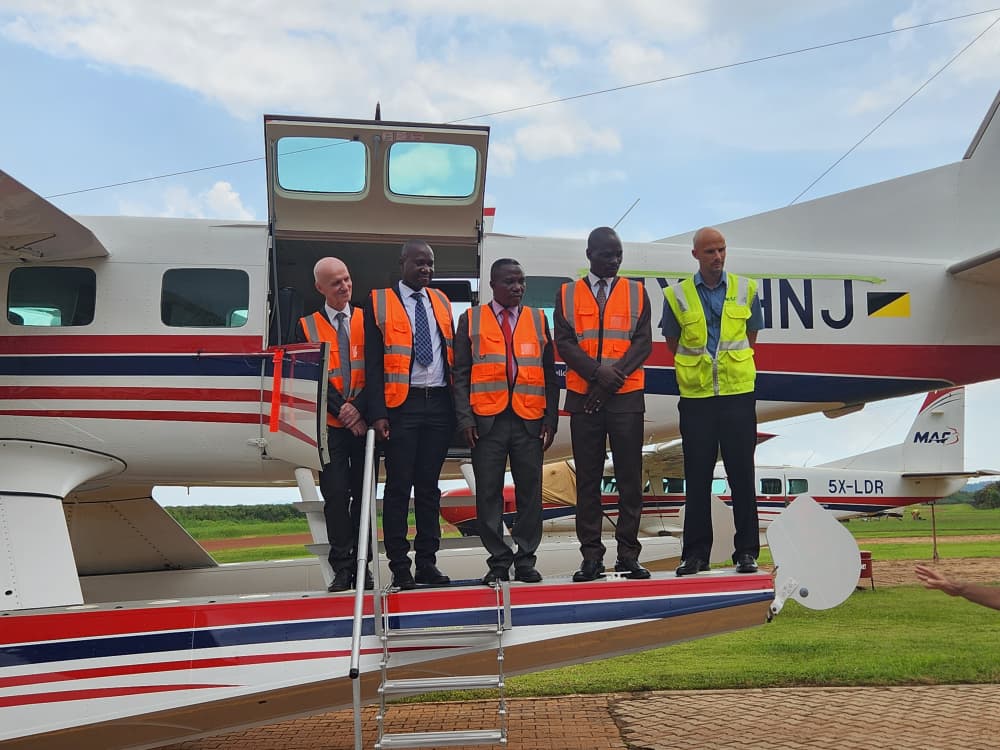
ENTEBBE. It is a moment of joy and excitement as Uganda unveiled its first ever amphibious float plane .
Launched by Mission Aviation Fellowship (MAF) , the dual-capacity aircraft designed to take off and land on both water and land.
The Cessna 208 float plane is expected to greatly improve transport and emergency healthcare access for island communities on Lake Victoria.
Unveiled at Kajjansi Airfield in a ceremony attended by officials from the Ministry of Works, Uganda Civil Aviation Authority (UCAA), and development partners including the Dutch Embassy, the innovation has been hailed as a life-saving solution for over 300,000 Ugandans living in hard-to-reach island communities.
Speaking at the launch on Tuesday , Sam Baguma, MAF Country Director, emphasized that the float plane was more than a transport upgrade—it’s a humanitarian tool.
“If you leave mainland Kampala to the farthest island without stopping, it takes two and a half to three days. With storms, people take five days. This plane will do that journey in just 25 to 30 minutes,” Baguma said.
“The more people are exposed to the elements on the lake, the more accidents we see. Reducing that journey from eight hours to 20 minutes could save countless lives.”
He added that while boat transport to some islands costs as high as shs500,000, the aircraft will charge significantly less.
“There is absolutely no way we would charge even close to 500,000. With 10 seats on board, our goal is to make it cheaper than hiring dugout canoes. This service is meant for the local people who need it most.”Mr Baguma added
He said when certification and training of Ugandan pilots is completed, flights will begin under a “proof of concept humanitarian schedule.”
MAF plans to begin operations with six initial island docking points including Bukasa, Buyovu, Lingira and Buvuma, with hopes to expand to all islands on Lake Victoria.
Baguma stressed the float plane’s role in emergency response:
“When there is a boat accident or medical emergency, we want to be able to take off and reach the scene in ten minutes. That response time can be the difference between life and death.”
He also revealed ongoing engagements with the Ministry of Health to deliver medical supplies, essential drugs, and mobile health personnel to islands where hospitals and health centers are non-existent.
Launching the aircraft officially, Fred Byamukama, State Minister for Transport, praised MAF for prioritising the dignity and safety of vulnerable communities.
“You are serving people in places where roads don’t exist. This initiative aligns with our commitment under the NRM manifesto to bring services closer to the people,” he said.
“This is not just transport it is access to education, health, and emergency services. It is hope for people who have been forgotten.”
Representing UCAA, Eng. Ronnie Barongo, Director of Safety and Communication, confirmed that regulatory frameworks are being updated to accommodate water-based aerodromes.
“This is a historic development. Uganda has over 80 islands on Lake Victoria, yet only two have airstrips. This amphibious aircraft changes the story—it brings the sky closer to the islands,” he noted.
The aircraft, a modified Cessna Caravan, carries nine passengers and up to 875 kilograms of cargo, depending on fuel load and distance. Lake Victoria is among the water bodies where most water accidents are recorded and emergency efforts are always difficult due to due obsolete boats and remoteness of most islands and landing sites .